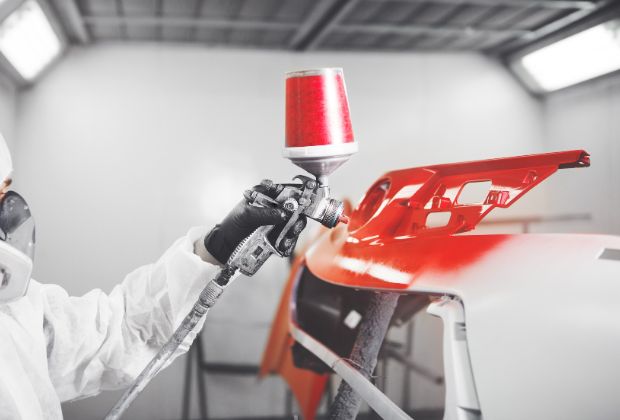Most people are usually fairly happy with the way a car is when they buy one. However, some people like to find ways to stylishly customize their cars to make them truly their own. Repainting one’s vehicle is one of the best methods for doing this.
You must prepare yourself for what lies ahead if you decide to take on this task alone. Like any DIY automotive project, painting your car won’t be as straightforward as it might initially seem. Here’s what you need to do before painting your car to ensure you get it right the first time.

Choose the Right Paint and Supplies
The quality of the paint and supplies you choose to use to paint your car will significantly impact the result. Learn about the different types of paint and choose one of high quality that suits your vehicle’s make and model. While you’re at it, make sure you have everything you need to properly apply the paint. Invest in quality brushes, rollers, and spray-painting equipment. Without this gear, even the best paint on the market will look bad on your vehicle.
Clean and Degrease the Surface
Once you have your supplies, it’s crucial to thoroughly clean and degrease the surface of your car. Any dirt, grease, or residue left behind can negatively impact the paint’s adhesion and cause flaws in the finish. Use a high-quality degreaser and a microfiber cloth to clean all areas of the car that you will be painting. Don’t forget to do a final wipe-down with a tack cloth to remove all dust and debris.
Repair and Smooth the Surface
You must ensure that the car’s surface is free of imperfections, such as scratches or dents, after cleaning it. This shouldn’t be an issue if your car is brand new. However, you may need to replace a few parts if the damage is too extreme, depending on the extent of the damage to your older vehicle.
However, it’s best to sand down the exterior surface before painting no matter the age of your vehicle. Fortunately, plenty of auto-body sanding tips are available for DIYers to use. Still, no matter how you go about it, this step is crucial for properly applying the new paint later.
Protect Yourself and Your Surroundings
Take some time to protect yourself and the area around your car before you open that can of paint. Wear proper safety gear, including gloves, goggles, and a mask, to prevent any harmful chemicals from contacting your skin or eyes. Additionally, ensure you properly ventilate your workspace, and that you’re working in a dust-free environment. Cover any items and areas you don’t want to get paint on with drop cloths or plastic sheeting.
Practice Your Technique
Finally, a crucial thing to do before painting your car if you’ve never done this before is to practice your technique on something less important. It’s best to find some spare panels or scrap metal to practice on. Test your spray equipment and perfect your technique so that when it’s time to paint your car, you’ll be confident enough to get it right the first time.
 World inside pictures Collect and share the best ideas that make our life easier
World inside pictures Collect and share the best ideas that make our life easier








